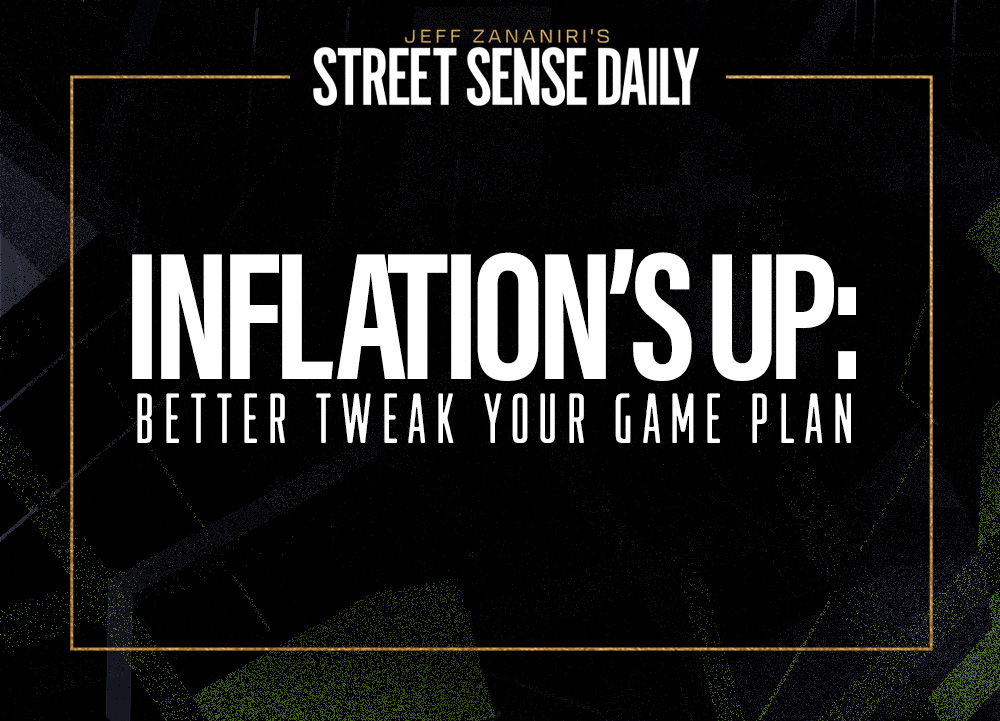Good morning, traders,
Inflation numbers are in, and they’re a wake-up call.
June’s Consumer Price Index (CPI) rose 2.7% year over year, up from May’s 2.4%.
That’s not a blip, it’s a rising trend, and if you’ve been wondering whether Trump’s tariffs are delivering shockwaves into everyday prices, the answer is starting to take shape.
Higher import costs are now reaching the shelves, and traders need to adjust fast.
Tariffs are basically taxes on goods coming into the country, and businesses front the cost.
Eventually, they pass it on to consumers.
We’re starting to see that as everyday items are slowly getting pricier. That 0.3-point pop in CPI means inflation is chugging higher.
For a trader, this kind of backdrop changes everything — from interest rate forecasts to sector rotations, and even what options strategies make sense right now.
This is what I’m doing to stay on top of things.
Still a Red Flag
First up: interest rates.
A bump from 2.4% to 2.7% isn’t wild, but it’s enough to make Fed policymakers sit up and pay very close attention.
If CPI keeps climbing, the Fed may hike rates or hold them firm longer.
That shifts sentiment in bond and stock markets. Rising rates could push bond yields higher — good for yield trades — but tougher for rate-sensitive companies.
That shift also flips where money flows within equities.
Financial stocks like banks tend to benefit from a steeper yield curve. Borrowers pay more and banks earn more.
That could be a play.
But other sectors, like utilities or real estate, which often rely on cheap credit, would likely take a hit.
Traders need to rotate away from rate-sensitive names into those that can actually boom in an inflationary environment.
Key Word: Volatility
So what about options?
Volatility loves inflation.
If trading desks start anticipating Fed action, you’ll see volatility creeping higher in Treasury futures, rate-sensitive equities, and even the VIX.
That opens the door for targeted strategies like picking up cheap volatility before it ripples out.
We also can’t forget commodities. When consumers face higher prices, commodity sectors often react first.
Metals, grains, energy can all get a boost if demand holds steady.
Traders may want to explore commodity futures or ETF plays in energy and industrial materials, where price action often accelerates in inflationary environments.
Last, rising U.S. inflation could strengthen or weaken the dollar depending on global reactions and relative interest-rate positioning.
Currency traders can capitalize by trading USD pairs against currencies with weaker inflation trajectories.
Up Means Up
Here’s the take-home: 2.7% CPI in June — up from 2.4% — is a signal.
It says tariffs are filtering through and pricing pressure is building.
That should keep the Fed alert and markets reactive.
Traders need to recalibrate exposure: Lean into rate-driven sectors, watch volatility, revisit commodity plays, and potentially trade the dollar.
Don’t get lulled into thinking inflation’s quiet.
If you ignore a rising CPI when tariffs are chipping away, you’ll get caught off side.
For option traders specifically, the opportunity lies in anticipating how volatility shifts as markets digest tighter Fed expectations and commodity-driven moves.
When the numbers change, so should your setup.
Inflation may not be roaring yet — but it’s whispering through the CPI. And if you’re not listening, you’ll miss the trade.
Stay street smart,
Jeff Zananiri
P.S. If you’re ready to start making smarter, faster trades — especially the kind that can hit overnight — don’t miss the Rogue Trading Summit.
This is where I show you how the real moves get made.
*Past performance does not indicate future results


